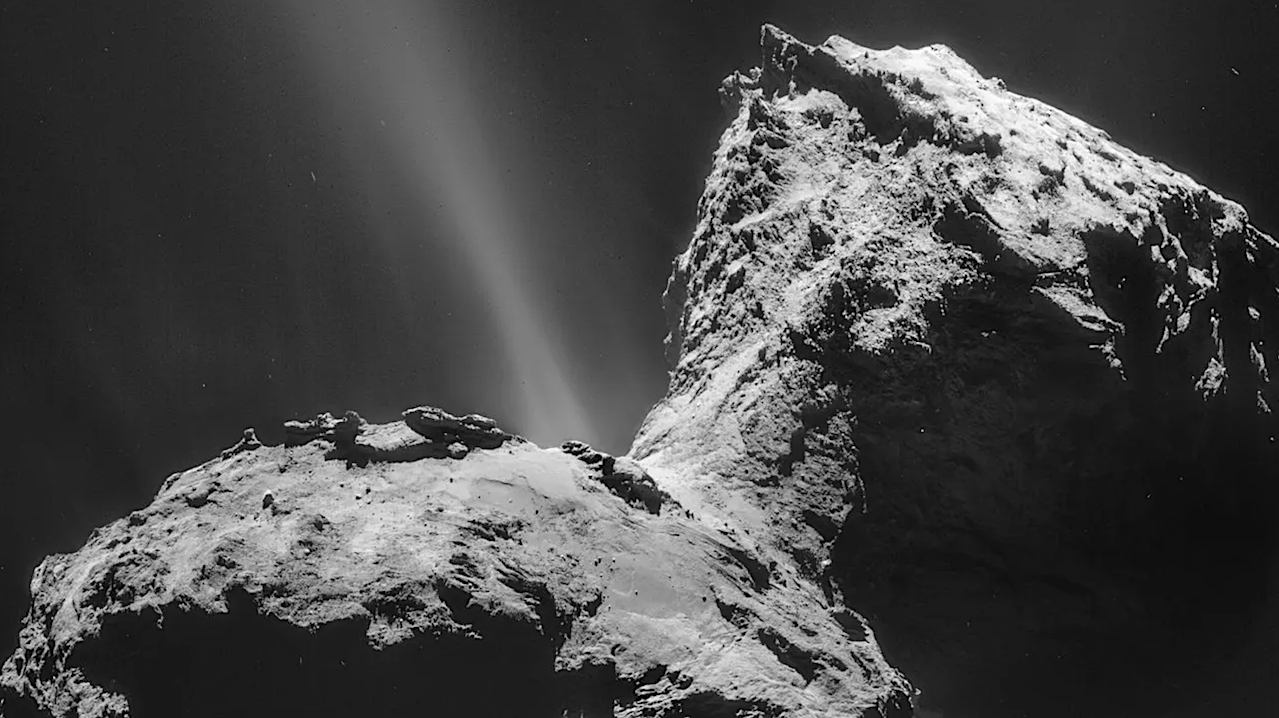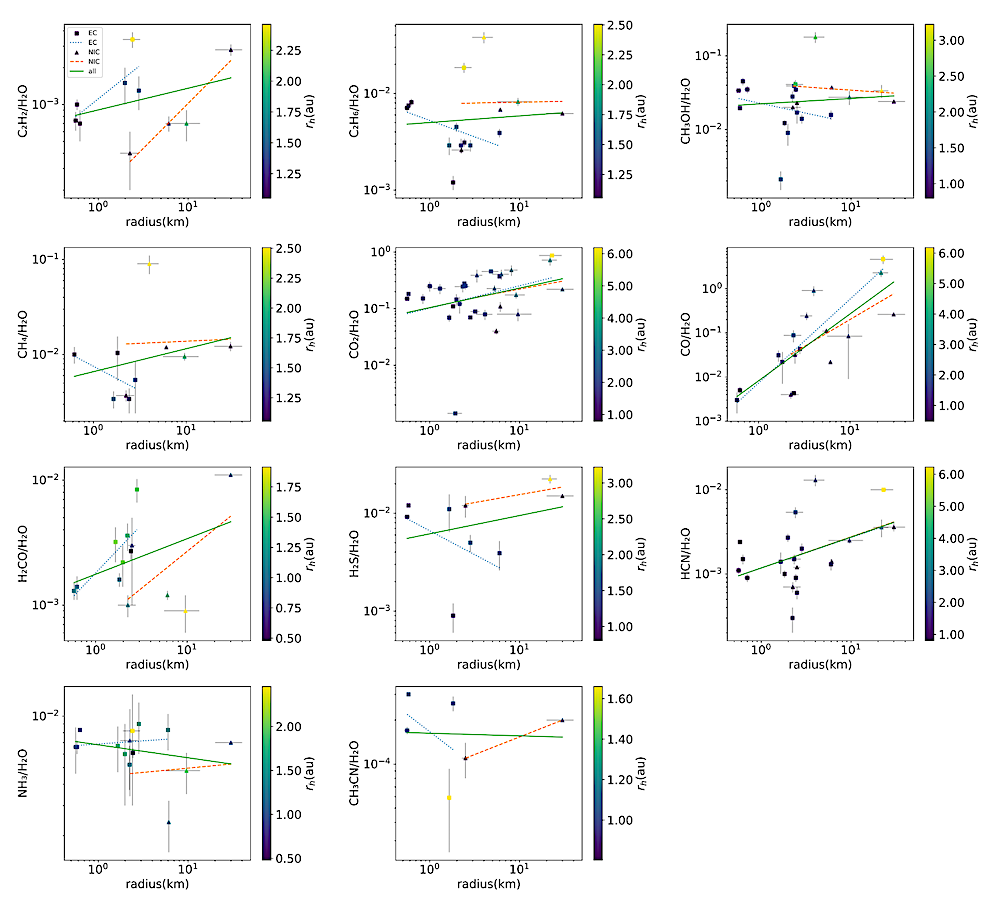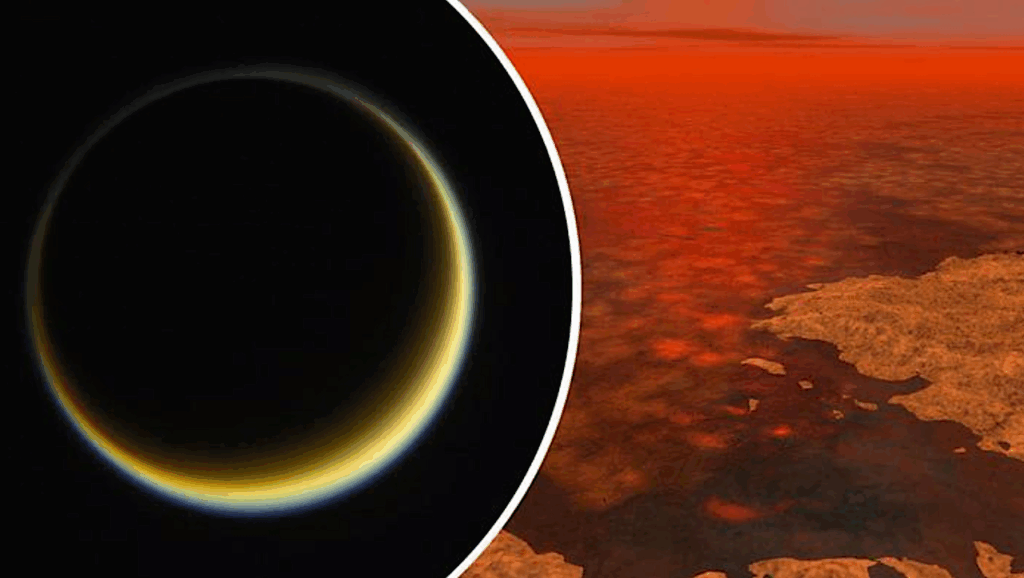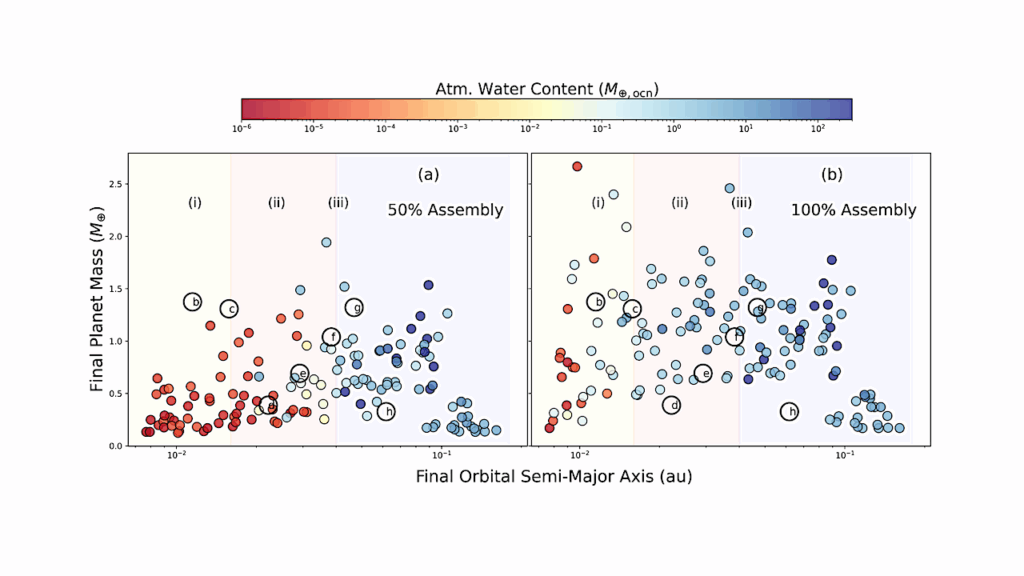A Link Between The Size And Composition Of Comets

All cometary nuclei that formed in the early Solar System incorporated radionuclides and therefore were subject to internal radiogenic heating. Previous work predicts that if comets have a pebble-pile structure internal temperature build-up is enhanced due to very low thermal conductivity, leading to internal differentiation.
An internal thermal gradient causes widespread sublimation and migration of either ice condensates, or gases released from amorphous ice hosts during their crystallisation. Overall, the models predict that the degree of differentiation and re-distribution of volatile species to a shallower near-surface layer depends primarily on nucleus size.
Hence, we hypothesise that cometary activity should reveal a correlation between the abundance of volatile species and the size of the nucleus. To explore this hypothesis we have conducted a thorough literature search for measurements of the composition and size of cometary nuclei, compiling these into a unified database.
We report a statistically significant correlation between the measured abundance of CO/H2O and the size of cometary nuclei. We further recover the measured slope of abundance as a function of size, using a theoretical model based on our previous thermophysical models, invoking re-entrapment of outward migrating high volatility gases in the near-surface pristine amorphous ice layers.
This model replicates the observed trend and supports the theory of internal differentiation of cometary nuclei by early radiogenic heating. We make our database available for future studies, and we advocate for collection of more measurements to allow more precise and statistically significant analyses to be conducted in the future.

Log scale plots showing the relation between comet composition (of various parent species relative to H2O) and radius of the nucleus. Marker shape denotes the dynamical class of each comet, either an Ecliptic Comet (EC, square markers) or Nearly Isotropic Comet (NIC, triangular markers). Marker colour indicates the heliocentric distance of the comet when the composition was measured. The error bars denote the uncertainty in the measured composition or size (when this was available). We indicate the correlation of the radius-composition data with a linear fit (in log-log space) for the whole dataset (solid line), ECs (dotted line) and NICs (dashed line). The Pearson correlation coefficients for each parent species are given in Table 2.– astro-ph.EP
James E. Robinson, Uri Malamud, Cyrielle Opitom, Hagai Perets, Jürgen Blum
Comments: 25 pages, 10 figures, accepted for publication in MNRAS
Subjects: Earth and Planetary Astrophysics (astro-ph.EP)
Cite as: arXiv:2403.15644 [astro-ph.EP] (or arXiv:2403.15644v1 [astro-ph.EP] for this version)
Submission history
From: James Edward Robinson
[v1] Fri, 22 Mar 2024 22:53:01 UTC (1,170 KB)
https://arxiv.org/abs/2403.15644
Astrobiology, Astrochemistry,








